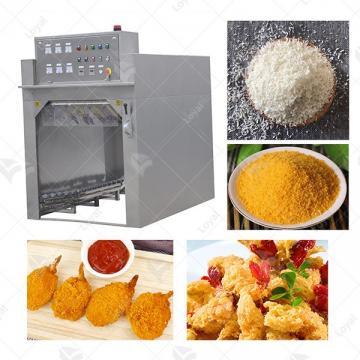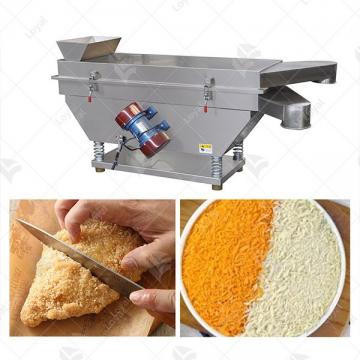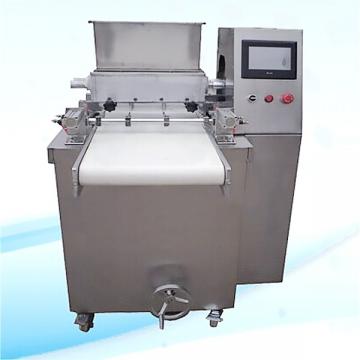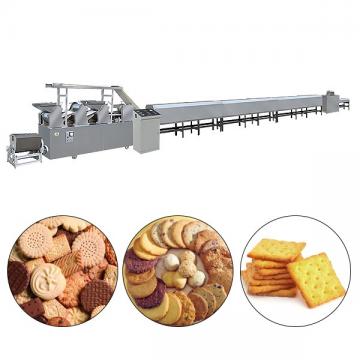
- Shandong Loyal Industrial Co.,Ltd.
- Macaroni Production Machine Instant Noodle Machine Biscuit Making Machine
Home> Company News> Unlock The Secret To Perfect Puff Extruder Machine: A Puff Extruder Machine Recipe Guide

Unlock The Secret To Perfect Puff Extruder Machine: A Puff Extruder Machine Recipe Guide
2025-04-25 09:50:12Introduction
The puff extruder machine is a revolutionary piece of food processing equipment designed to produce light, crispy, and flavorful puffed snacks with precision and efficiency. Whether you're manufacturing cheese puffs, corn curls, or protein-enriched extruded snacks, mastering the right techniques and recipes is essential for consistent quality and texture. In this guide, we’ll explore the science behind puff extruder machines, optimal ingredient formulations, and step-by-step production methods to help you unlock the full potential of your extrusion process—ensuring perfect puff snacks every time.

Understanding Puff Extruder Machines
How a Puff Extruder Machine Works (Extrusion Process Explained)
A puff extruder machine is a specialized industrial food processing system designed to transform raw materials like cornmeal, wheat flour, or rice into airy, crispy snacks through a precise extrusion process. The operation begins with feeding granular ingredients into the machine’s hopper, where they are conveyed into a heated barrel by a rotating screw. As the screw advances, mechanical friction and controlled heating (typically 100–150°C) create high pressure (50–100 bar) and temperature, gelatinizing starches and forming a molten dough-like mass.
At the die end of the barrel, the pressurized mixture is forced through a shaped orifice, causing an abrupt pressure drop that triggers rapid water vaporization—known as “explosive puffing.” This instantaneous expansion creates the characteristic light, porous structure of puffed snacks. The final product is then cut to size by a rotating blade, ready for seasoning, packaging, or further processing.
Key Components of a High-Quality Puff Extruder Machine
- Hopper & Feeding System: Ensures consistent, uniform delivery of raw materials into the extrusion chamber, often equipped with adjustable speed controls to manage throughput.
- Barrel & Screw Assembly: The core of the machine, where mixing, cooking, and pressurization occur. High-quality machines feature wear-resistant alloy steel barrels and screws with specialized flight profiles to optimize shear and heat distribution.
- Heating/Cooling Jacket: Maintains precise temperature control throughout the extrusion process, critical for starch gelatinization and product texture.
- Die & Cutting Unit: The die shape dictates the final product’s geometry (e.g., tubes, curls, rings), while the cutting blade ensures uniform piece length. Advanced systems allow quick die changes for versatile product development.
- Drive System: Provides the torque required for screw rotation, often powered by energy-efficient motors with variable frequency drives for speed adjustment.
Types of Snacks Produced Using Puff Extrusion
Puff extrusion technology is highly versatile, enabling the production of a wide range of popular snacks:
- Cheese Puffs: Light, airy tubes coated in cheesy seasonings, created by extruding a corn-based dough through a die and inflating it into hollow shapes.
- Corn Curls: Thin, crispy spirals made from cornmeal, often flavored with salt, vinegar, or chili for crunchy texture.
- Rice Puffs: Lightweight, cereal-like pellets ideal for breakfast cereals or snack mixes, produced using rice flour blends.
- Multigrain Snacks: Combinations of wheat, oats, or quinoa extruded into puffed shapes for healthy, whole-grain options.
- Novelty Shapes: Custom dies allow for creative forms like stars, balls, or letters, popular in children’s snacks or branded products.

Advantages of Puff Extruder Machine
|
Key Advantage |
Detailed Explanation |
|
High Efficiency & Throughput |
- Processes raw materials (e.g., corn, rice, wheat) into finished puffed snacks at scale (100–500 kg/h typical output). |
|
Versatility in Product Design |
- Customizable dies enable production of diverse shapes (tubes, curls, pellets, novelty forms) and textures (crispy, airy, dense). |
|
Cost-Effective Production |
- Low energy consumption compared to batch frying processes. |
|
Nutritional Retention |
- Short processing time (seconds) preserves nutrients in raw materials. |
|
Consistent Product Quality |
- Precise control over temperature (100–150°C), pressure (50–100 bar), and screw speed ensures uniform puffing and texture in every batch. |
|
Scalability for Business Growth |
- Modular designs allow easy integration with downstream systems (seasoning lines, packaging machines). |
|
Sustainability Features |
- Reduces oil usage compared to traditional frying methods, aligning with clean-label trends. |

Step-by-Step Puff Extruder Machine Recipe Guide
1. Preparing the Mixture: Ideal Ratios and Mixing Techniques
The foundation of any successful puffed snack lies in the raw material formulation. For a classic corn-based puff:
- Base Ingredients: 80–85% cornmeal (fine grind), 10–15% wheat flour (for binding), 3–5% moisture (adjust based on starch content).
- Additives: 1–2% salt, optional flavors (e.g., cheese powder, spices), or functional ingredients (fiber, protein isolates).
- Mixing Protocol:
- Use a ribbon blender to combine dry ingredients for 5–8 minutes until homogeneous.
- Gradually add water or steam to achieve a dough consistency with 12–15% moisture content (test with a moisture analyzer).
- Rest the mixture for 10–15 minutes to allow starch hydration, improving extrudability.
Pro Tip: For gluten-free recipes, substitute wheat flour with rice or potato starch and increase binding agents like xanthan gum (0.5–1%).
2. Machine Setup: Temperature, Pressure, and Screw Speed Settings
Precision in machine calibration is critical for uniform puffing:
- Barrel Temperature Zones:
- Zone 1 (feed section): 60–80°C (initial moisture absorption).
- Zone 2 (cooking section): 100–130°C (starch gelatinization).
- Zone 3 (die section): 120–150°C (final plastification).
- Pressure Regulation: Maintain 50–100 bar in the extrusion chamber (monitored via pressure transducers). Higher pressure yields denser textures; lower pressure creates airier puffs.
- Screw Speed: Operate at 200–350 RPM (adjust based on dough viscosity). Faster speeds increase shear and temperature, while slower speeds enhance mixing.
- Die Selection: Match die aperture size to desired product thickness (e.g., 2–4 mm for cheese puffs, 1–2 mm for corn curls).
Critical Check: Preheat the machine for 15–20 minutes before feeding the mixture to ensure stable thermal conditions.
3. Extrusion Process: Monitoring and Troubleshooting Common Issues
- Operation Protocol:
- Gradually introduce the mixture into the hopper to avoid screw stall.
- Monitor amperage readings on the drive motor to maintain consistent load (target ±5% variation).
- Collect samples every 10 minutes to check puff density (target 20–40 g/L), expansion ratio, and color uniformity.
- Troubleshooting:
|
Issue |
Cause |
Solution |
|
Poor puffing |
Low barrel temperature/pressure |
Increase zone 2–3 temps by 10–15°C; adjust screw speed. |
|
Extrudate sticking to die |
High moisture or die roughness |
Reduce moisture to 10–12%; polish die surface or apply food-grade lubricant. |
|
Uneven texture |
Inconsistent mixing |
Extend blending time; check for ingredient clumping. |
4. Post-Extrusion Steps: Drying, Seasoning, and Packaging Tips
- Drying:
- For crispy snacks, pass extrudates through a conveyor dryer at 60–80°C for 10–15 minutes to reduce moisture to <3%.
- For coated products (e.g., chocolate-covered puffs), apply a pre-drying stage at 40–50°C to set the surface.
- Seasoning:
- Use a drum or belt coater to apply dry seasonings (1–5% by weight) or oil-based flavors (2–4% oil content).
- Ensure even distribution by matching seasoning application speed to production line velocity (typically 5–10 m/min).
- Packaging:
- Use airtight packaging with modified atmosphere (e.g., N₂ flushing) to preserve crunchiness and shelf life (6–12 months).
- Label clearly with ingredients, nutritional facts, and allergen warnings for compliance with food safety standards.
Industry Insight: Integrate inline metal detectors and weight checkers post-seasoning to maintain quality control and regulatory compliance.

Common Mistakes & How to Avoid Them with a Puff Extruder Machine
Operating a Puff Extruder Machine efficiently requires precision and awareness of frequent pitfalls. Here are critical mistakes and expert solutions:
1. Incorrect Raw Material Preparation
Mistake: Using improperly conditioned flour or inconsistent moisture levels (too dry/wet) leads to uneven expansion or clogging.
Solution: Pre-test raw materials for optimal moisture (typically 12–18%). Sieve flour to prevent lumps and ensure uniform hydration.
2. Overheating the Barrel
Mistake: Excessive barrel temperatures degrade product quality, causing burnt puffs or excessive brittleness.
Solution: Monitor thermocouples closely. Maintain temperatures between 120–180°C (varies by recipe) and calibrate heating zones regularly.
3. Improper Screw Speed Adjustment
Mistake: Running the screw too fast causes under-expansion; too slow reduces output and risks motor strain.
Solution: Match screw speed (RPM) to product density. For light puffs, 200–400 RPM is typical. Consult your Puff Extruder Machine manual for torque limits.
4. Neglecting Die Maintenance
Mistake: Worn or dirty dies result in irregular shapes, pressure drops, or contamination.
Solution: Clean dies after each batch and inspect for wear. Use food-grade lubricants for longevity.
5. Skipping Pre-Operational Checks
Mistake: Failing to inspect seals, motors, or safety interlocks risks downtime or accidents.
Solution: Implement a checklist for belt tension, oil levels, and emergency stops before startup.

Innovative Uses of Puff Extruder Machines
The Puff Extruder Machine has revolutionized the food processing industry by enabling the production of lightweight, crispy, and expanded snacks with unmatched efficiency. Beyond traditional puffed snacks, this versatile machine unlocks innovative applications that cater to evolving consumer demands and industrial needs.
1. Multi-Textured Snack Production
Modern Puff Extruder Machines can create layered textures—combining crispiness with melt-in-mouth finishes—by adjusting extrusion parameters like temperature, pressure, and screw speed. For instance, dual-textured cereal puffs or protein-enriched snack sticks are now achievable with precision.
2. Nutrient-Fortified Functional Foods
With health-conscious trends rising, extruders are used to incorporate proteins, fibers, and vitamins into puffed products. The Puff Extruder Machine ensures uniform nutrient distribution while maintaining palatability, ideal for energy bars or infant cereals.
3. Plant-Based & Alternative Protein Expansion
The machine’s high-pressure extrusion capability mimics meat-like textures in plant-based snacks (e.g., pea or soy puffs). This aligns with sustainable food trends, offering a scalable solution for alt-protein manufacturers.
4. Custom Shapes & 3D Food Printing
Advanced dies and molds allow intricate shapes (stars, tubes) for branded snacks. Some systems integrate with 3D food printing, enabling geometric precision for gourmet or aerospace-ready foods.
5. Waste Reduction & Byproduct Utilization
Food processors repurpose byproducts (rice bran, spent grains) into puffed ingredients using Puff Extruder Machines, reducing waste and adding revenue streams.

Conclusion
Mastering the Puff Extruder Machine is key to producing high-quality, consistent puffed snacks with optimal texture and flavor. By understanding the machine’s mechanics, selecting the right raw materials, and fine-tuning operational parameters, manufacturers can unlock unparalleled efficiency and product excellence.
Whether you’re scaling production or refining your recipe, the Puff Extruder Machine remains an indispensable asset in the food processing industry. Investing in proper maintenance and staying updated with technological advancements will ensure long-term productivity and competitive edge.
Reference
Here are five authoritative foreign websites related to industrial food machinery, along with their URLs:
1.ThomasNet
Website: https://www.thomasnet.com
2.MachineryTrader
Website: https://www.machinerytrader.com
3.Food Engineering:https://www.foodengineeringmag.com
4.Pack Expo:https://www.packexpo.com
5.DirectIndustry:https://www.directindustry.com
 Commercial Japanese Panko Bread Crumb Grinder Machine
Commercial Japanese Panko Bread Crumb Grinder Machine Japanese Bread Crumbs Processing Line
Japanese Bread Crumbs Processing Line Automatic Cookies Making Machines
Automatic Cookies Making Machines Fully Automatic Biscuit Making Machines
Fully Automatic Biscuit Making Machines